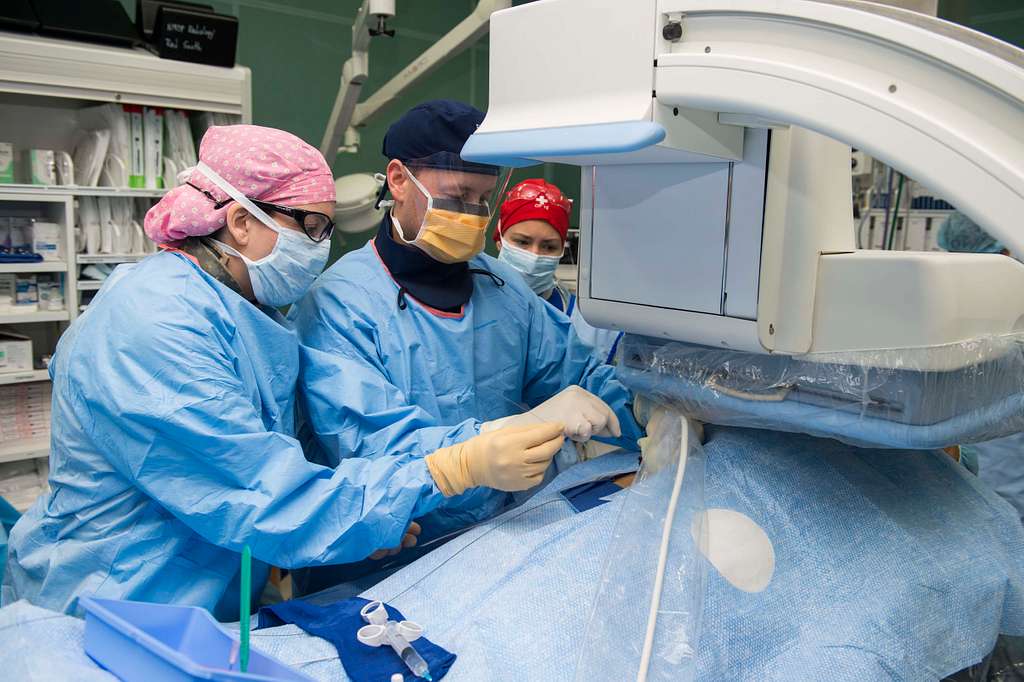Interventional radiology (IR) has transformed modern medicine. This cutting-edge medical subspecialty focuses on minimally invasive procedures that diagnose and treat an array of conditions using advanced imaging technology. By utilizing X-rays, CT scans, MRI, and ultrasound, IR offers targeted, precise treatments that often serve as effective alternatives to traditional surgery. Discover the scope of interventional radiology, its benefits, and its applications in treating conditions like uterine fibroids and hemorrhoids.
What is Interventional Radiology?
Imaging techniques guide minimally invasive procedures that address various medical conditions, replacing or complementing traditional surgical methods. This approach is key to interventional radiology, a specialized medical discipline.
Unlike conventional surgery, which often involves significant incisions and extended recovery periods, IR procedures are performed via small entry points, reducing patient distress and improving outcomes. Common tools include catheters, needles, and advanced medical devices that allow precise navigation within the body.
What are the Benefits of IR?
Minimally invasive procedures offer significant advantages compared to traditional surgical methods:
- Reduced Recovery Time: Minimal incisions mean less trauma, lower risk of complications, and faster recovery times. Many procedures are done in outpatient settings so patients can return home the same day.
- Enhanced Patient Outcomes: Minimally invasive techniques reduce blood loss, pain, and scarring, leading to quicker recovery and higher patient satisfaction.
- Outpatient Procedure Benefits: Procedures outside traditional hospitals reduce wait times, improve convenience, and provide superior care in a relaxed environment.
What Conditions Are Treated with IR?
Interventional radiology addresses many medical concerns. It offers advanced, minimally invasive treatments. Here’s a look at two commonly treated conditions.
Uterine Fibroids
Uterine fibroids are non-cancerous growths in the uterus that can cause heavy menstrual bleeding, pelvic pain, and frequent urination. IR addresses this issue with uterine fibroid embolization, a procedure that blocks blood flow to the fibroid, causing it to shrink and alleviating symptoms. Unlike traditional surgeries like hysterectomy, embolization preserves the uterus and aids in quicker recovery.
Hemorrhoids
Severe cases of hemorrhoids, marked by chronic bleeding or discomfort, can also be treated using minimally invasive procedures. Hemorrhoid embolization targets the arteries supplying the hemorrhoid tissue, significantly reducing symptoms without the need for invasive surgery.
Other Treated Conditions
Beyond these, IR is used to address various conditions such as:
- Chronic pain through nerve blocks
- Varicose veins
- Liver and kidney tumors
- Peripheral arterial disease
What is the Role of Embolization in IR treatments?
Embolization is a key technique in interventional radiology that selectively blocks blood vessels to treat specific conditions. Guided by imaging, small particles or embolic agents are injected into target blood vessels to stop blood flow. This process deprives abnormal tissues, such as fibroids or tumors, of the oxygen and nutrients they need to grow.
This minimally invasive technique offers several benefits. By targeting the affected area, embolization minimizes blood loss and avoids unnecessary damage to surrounding tissues. It is versatile, treating a range of conditions from uterine fibroids to uncontrolled bleeding, such as gastrointestinal hemorrhages. It also carries lower risks than open surgery, reducing complications like infection.
Explore Interventional Radiology Today!
Interventional radiology is one of the most innovative fields in modern medicine, offering minimally invasive, highly effective treatments for various healthcare challenges. By understanding its applications and benefits, individuals can make informed decisions about their health. If you’re seeking a targeted, patient-centered approach to conditions such as uterine fibroids or hemorrhoids, it may be the optimal solution.

